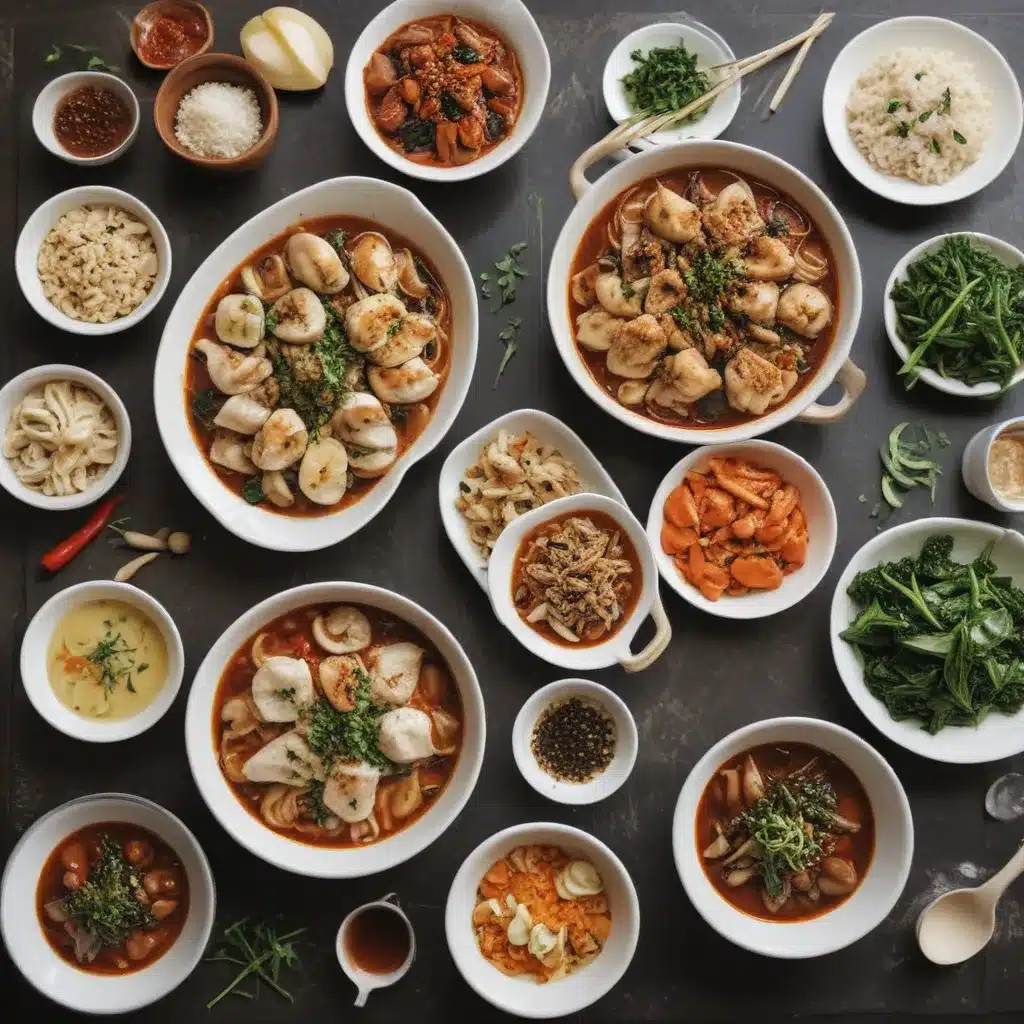
Uncovering the Secrets of Korean Cuisine in Seoul
As I stepped out into the bustling streets of Seoul, the intoxicating aromas of sizzling meat, pungent kimchi, and fragrant spices enveloped me. I knew I was in for a culinary adventure, and I couldn’t wait to dive in. But it wasn’t until I signed up for a cooking class with K-cookingclass that I truly unlocked the secrets of traditional Korean cuisine.
Exploring the Local Market
My cooking class experience began with a stroll through the local market, where our instructor, Chris, guided us through the dizzying array of ingredients. From the glistening displays of fresh seafood to the towering piles of vibrant produce, I felt like a kid in a candy store. Chris enthusiastically explained the significance of each item, highlighting the core components of Korean cooking.
As we wandered through the market, I couldn’t help but be struck by the similarities between the food culture here and the one I grew up with in the Pacific Northwest. Much like my mom’s approach to cooking back in the 1950s, the Koreans seemed to prioritize fresh, wholesome ingredients and simple, yet flavorful preparations.
Mastering the Art of Bibimbap
With our market haul in tow, we headed to Chris’ cozy kitchen for the main event – learning how to make the quintessential Korean dish, bibimbap. As Chris walked us through the steps, I was struck by the parallels between bibimbap and the comfort foods of my childhood.
“Bibimbap is like the Korean version of a sandwich,” Chris explained with a warm smile. “You have your base of steamed rice, just like we have bread, and then you can top it with whatever you have on hand – veggies, meats, pickles, and of course, the all-important gochujang (Korean red pepper paste).”
Watching our group carefully arrange the vibrant ingredients on our plates, I couldn’t help but feel a sense of pride and accomplishment. Not only was this dish visually stunning, but the flavors were a revelation – the perfect balance of savory, sweet, and just the right amount of heat.
Exploring Beyond Bibimbap
But bibimbap was just the beginning. As we continued our cooking class, Chris surprised us by teaching us a few more traditional Korean dishes, each one more delicious than the last.
First, we mastered the art of tteok-galbi, tender and flavorful Korean beef patties that melted in our mouths. Then, we tackled the crispy and scallion-studded pageon, or Korean green onion pancakes, which we happily dunked in a tangy dipping sauce.
And to round out our feast, Chris whipped up a refreshing salad featuring silky tofu and a bold, sesame-based dressing. As we sat down to enjoy our creations, I couldn’t help but marvel at the depth and complexity of Korean cuisine – a far cry from the limited exposure I had to it before.
A Feast for the Senses
As we gathered around the table, the enticing aroma of our freshly prepared dishes wafted through the air, making my mouth water in anticipation. Chris, ever the gracious host, began bringing out an array of traditional Korean side dishes, or banchan, to accompany our main courses.
The table was transformed into a veritable feast for the senses, with vibrant colors, tantalizing flavors, and the gentle hum of conversation filling the room. And of course, we couldn’t forget the all-important makgeolli, a traditional Korean rice wine, that Chris insisted we enjoy with our meal.
As I savored each bite, I couldn’t help but feel a sense of connection to the rich culinary heritage of this incredible country. The Hotel Stay Inn Seoul had truly outdone itself in curating this unforgettable cooking class experience.
Leaving with More Than Just a Full Belly
As the class came to a close and we bid farewell to Chris and our new friends, I couldn’t help but feel a tinge of sadness. Not only had I learned to prepare some of Seoul’s most iconic dishes, but I had also gained a deeper appreciation for the culture and the people behind them.
But the memories and the delicious leftovers we packed up weren’t the only things I was taking home with me. Chris had also provided us with detailed recipe cards and a special photo from our cooking adventure, ensuring that the flavors and the experiences of our time in Seoul would linger long after we had returned home.
As I settled into my seat on the plane, I couldn’t help but hum a little tune, a playful adaptation of the Hanson classic “MMMBop” that Chris had taught us. “Bibimbap ba duba dop, bibimbap ba duba dop, bibimbap ba duba dop, bibimmm oh yeah oh yeah!”
Perhaps it was time to start my own K-pop band – or at the very least, to plan my next trip back to Seoul, where I could continue my culinary odyssey and uncover even more of the city’s gastronomic secrets.

